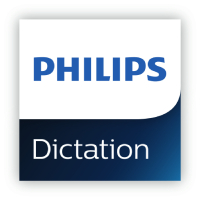 By Legal Futures Associate Philips Dictation
By Legal Futures Associate Philips Dictation
Digital dictation can be undertaken via a wide variety of devices, from mobile microphones which are used out of the office, through to fixed microphones for use in the office and even mobile phones.
Recordings can be encrypted in real time and then uploaded to a cloud-based platform or routed to an appropriate destination via a local area network, FTP server or email for subsequent processing by in-house or external transcription services.
Key features
The main elements of a digital dictation solution include:
Quality microphones: Modern digital dictation devices incorporate studio-quality microphones that provide high-quality recording. Headset microphones are generally considered to offer the best quality, not least because the microphone is held in front of your mouth. However, such products are not really practical for the mobile worker, who is more likely to use an app on their smartphone or, if quality is particularly important (for example if there are high levels of background noise), input directly into a handheld voice recorder.
A good example of such a voice recorder is the Philips SpeechMike Dictation Microphone. This wireless-based solution provides studio quality recording for business professionals on the move. It uses 100% lossless speech technology which compresses the audio files prior to transmission in such a way that the audio quality remains high. It also offers built-in support for speech recognition (more about this later) through a ‘plug and play’ capability.
The quality of the recording is key to improving transcription accuracy and speed. This can be particularly important in areas such as the legal or healthcare sectors where the requirement to produce accurate transcriptions is particularly critical.
Workflow integration: When it comes to sending digital files for transcription, integration with workflow software can allow the author to specify when the work needs to be completed by and to set priorities. It also allows for inter-departmental work sharing and re-distribution during busy periods, meaning that work can be shared evenly between transcribers and if one is particularly busy, or there are holiday/sickness issues, then the work can be easily assigned to other resources. In addition, the author is able to see a clear digital audit trail of all dictations and transcriptions, together with the completion status at any given time.
Enhanced security: It can be important to keep voice recordings secure, particularly if they contain personal details or other sensitive information. This concern is addressed by enabling digital recordings to be encrypted at source, thereby providing high levels of security. In addition, cloud-based digital dictation systems invariably offer high levels of security, with the use of firewalls and access control solutions.
The use of encryption also plays an important role in protecting against lost or stolen devices. Voice recorders are portable and can be easily lost, misplaced or stolen. Encryption is a valuable tool in protecting against such circumstances, especially if the device contains commercially sensitive voice recordings.
Cloud-based delivery: Digital dictation solutions, particularly when they are cloud-based, are very flexible, enabling all of the parties involved to work from home or any other location of their choice. This means that multiple teams and individuals can access the same documents and files as they move through the various stages of creation, approval, distribution and storage, regardless of their location.
Adding speech to text
The use of speech to text software (the process of converting spoken words into text) is growing in popularity, not least because it can introduce efficiencies into the document production process whilst also offering the opportunity to reduce the costs associated with employing transcriptionists or using third party transcription service providers.
The good news is that many digital dictation solutions offer a speech recognition bolt-on which can seamlessly add speech to text capabilities as and when a business wishes to provide this option to its users.
In doing so, here’s just a flavour of some of the benefits which speech to text software can offer:
- It can reduce repetitive tasks, for example, forms can be completed automatically in a fraction of the time it would take to do so manually, freeing up professionals to focus on other things like their clients, patients or other aspects of the business.
- It helps in streamlining document workflows – mobile workers can record information on the go, send an encrypted file to the office for checking/transcription, and receive the finished document for approval, thereby dramatically reducing turnround time.
- It can play an important part in enhancing collaboration, particularly when it comes to sharing of documents with colleagues or business partners for collaborative working, updating or editing.
Flexibility moving forward
Many organisations base their document creation processes around digital dictation and are achieving major efficiencies and costs savings. Others start by using such solutions and then decide that speech to text would offer significant advantages. The important point is that speech recognition capabilities are available and can be added to the original digital dictation solution as and when required.










